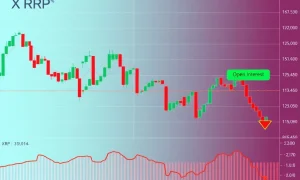Financial markets experienced significant turbulence recently as major indices declined substantially. However, Citigroup analysts present a compelling perspective that this movement represents strategic sector rotation rather than fundamental market weakness. Their analysis suggests investors should understand the distinction between normal market adjustments and genuine crisis conditions.
Understanding the Current Stock Sell-Off Dynamics
The recent stock sell-off caught many investors by surprise with its intensity and speed. Consequently, market participants quickly sought explanations for the downward pressure. Citigroup’s research team, however, identifies this as a classic rotation pattern rather than a broader market collapse. They emphasize that such movements typically occur during healthy market cycles.
Key Indicators of Sector Rotation
Several factors distinguish routine rotation from concerning market declines. Firstly, volume patterns show selective selling rather than broad-based liquidation. Secondly, sector performance reveals clear winners alongside declining segments. Thirdly, fundamental economic indicators remain stable despite equity market volatility. These signals collectively suggest calculated portfolio adjustments.
Potential Triggers for Deeper Market Correction
While current conditions indicate rotation, Citigroup outlines specific triggers that could escalate into genuine market stress. Significant interest rate surprises represent one potential catalyst. Additionally, geopolitical escalation or major economic data disappointments could change market dynamics. Furthermore, systemic financial stress would indicate more than simple sector rotation.
Historical Context for Market Movements
Historical analysis supports the rotation thesis according to Citi’s research. Previous similar episodes typically resolved within weeks rather than months. Moreover, recovery patterns consistently favored fundamentally strong sectors after rotation completion. Market history shows that panic during rotation periods often creates buying opportunities.
Investment Implications and Strategy
Investors should maintain perspective during this stock sell-off period. Diversification across sectors provides protection during rotation phases. Additionally, quality companies with strong balance sheets typically outperform during market uncertainty. Long-term investment strategies generally benefit from avoiding reactionary decisions during temporary market dislocations.
Monitoring Market Signals
Professional investors monitor specific indicators to distinguish rotation from crisis. Credit spreads provide crucial information about market stress levels. Meanwhile, volatility patterns indicate whether movements reflect fear or calculation. Volume analysis further clarifies whether selling represents broad market exit or targeted repositioning.
Frequently Asked Questions
What exactly is sector rotation in stock markets?
Sector rotation occurs when investors move capital from one market sector to another based on changing economic conditions or valuation disparities. This movement often causes temporary market volatility without indicating broader market problems.
How long do typical rotation periods last?
Most rotation phases complete within 4-8 weeks, though particularly sharp rotations may resolve faster. Historical data shows extended rotations typically indicate underlying market issues rather than simple sector adjustment.
Should investors change strategies during rotation?
Most analysts recommend maintaining long-term strategies during rotation periods. Attempting to time sector changes often results in missed opportunities and increased transaction costs without improving returns.
What signals would indicate more than rotation?
Sustained credit spread widening, simultaneous declines across all sectors, and deteriorating economic fundamentals would suggest more serious market issues than simple rotation between sectors.
How does Federal Reserve policy affect rotation?
Interest rate expectations significantly influence rotation patterns as investors adjust to changing cost of capital and economic growth projections. Policy surprises can accelerate or alter rotation dynamics.
Which sectors typically benefit during rotation periods?
Defensive sectors like utilities and consumer staples often outperform during uncertainty, while cyclical sectors may underperform until rotation completes and market confidence returns.








